How to Hang Peel and Stick Wallpaper
Today, I’m going to (finally!) teach you how to hang peel and stick wallpaper! This is a tutorial I’ve been wanting to write for ages; and although I’ve wallpapered over a dozen different walls across our last few rental homes, I’ve never had the time, daylight, or help to photograph the process in detail. Hanging peel and stick wallpaper is not hard, but it’s not easy either…and it’s definitely intimidating. I hope the process, tips, and tricks I share today help you feel a little more confident giving peel and stick wallpaper a try. Because really…it’s one of the absolute best ways to breath new life into any space!
Why Use Peel and Stick Wallpaper?
Once upon a time, paint was my tried-and-true method for personalizing our rental homes. But painting is messy and time consuming, with lots of tedious steps to get from start to finish. Plus, having to repaint walls before moving out is always a process we never seem to have time or energy for.
Although peel and stick wallpaper is more expensive than a gallon of paint and a little trickier to hang, the overall process of putting it up and pulling it back down is much faster than painting. Plus, with so many amazing patterns now available, you get a lot of bang for your buck, essentially creating an instant transformation without replacing anything else.
Case in point…below are the photos I snapped of our master bedroom right before installing our newest wallpaper selection. The room is bland and blah.
Without changing anything else (well, I did swap a pillow), here is our bedroom after hanging the wallpaper. Talk about a dramatic before and after, right?!?
Whether you rent or not, using peel and stick wallpaper can provide an instant refresh and will be well worth the sweat and frustration usually involved in hanging it. Let me break the whole process down for you!
Supplies Needed to Hang Peel and Stick Wallpaper
One of the best parts of hanging peel and stick wallpaper is that no fancy tools or messy pastes are required. Here are the supplies I rely on over and over:
- Peel and Stick Wallpaper – This is the paper I used.
- 24″ Ruler with Rotary Cutter and Cutting Mat – A regular ruler and scissors will certainly do, but I find these tools makes getting precise, straight cuts so much easier.
- XL Scraper – Many rolls of wallpaper will come with a scraper, but I really prefer the wide width of this one for smoothing out bubbles and creases.
- Craft Knife – A sharp craft or X-acto knife is a must for getting clean edges.
- Tape Measure
- Level
- Not Required but Highly Recommended: A Helper* | Patience
*The young lad seen in these photos is my awesome nephew. He happily helped wallpaper 3 rooms when I was 9 months pregnant with Jack, and is now a wallpaper pro himself. I couldn’t have snapped all these photos or tackled this huge wall without his help!
Calculating Your Wallpaper Needs
I’m not kidding when I say that figuring out how much wallpaper you need is one of the trickiest steps (especailly if you’re math challenged like me!) Many wallpaper sites have calculators built in, and THIS is a good one to reference too. Whether you do your own calculations or rely on a calculator, make sure you account for these factors:
- Wall Height
- Wall Width
- Pattern Repeat
- Roll Width
- Roll Length
You might also want to account for areas of a wall that won’t be covered such as doorways and windows, and subtract those measurements from your final calculation.
TIP! If you are certain of your furniture placement (like we are…there is only one wall our bed can go on!), you can also choose not to paper behind large furniture items. I opted not to wallpaper behind our 60″ tall, King-sized bed, easily saving us 1-2 rolls of wallpaper!
Need some other ideas for bringing down the cost of your wallpaper? See my budget-wise tricks HERE!
Finally, I always always always recommending ordering 1 more roll than you think you need. Like yarn and fabric, wallpaper is printed in lots. If you discover mid-project that you need one more roll, tracking down paper from the same lot can be difficult if not impossible. (And yes, you’ll be able to see the difference if the lots don’t match #beentheredonethat). Returning an extra roll (or better yet, using the leftovers to line drawers or shelves!) is a safer bet!
Prepping Your Walls to Hang Peel and Stick Wallpaper
Unlike traditional wallpaper, there isn’t much you need to do to get your walls ready. I do recommend removing all outlet and switch plate covers where possible, and wiping down the walls with a microfiber cloth to eliminate any dust, cobwebs, etc. In my experience, there is no need to freshly paint or sand your walls.
Wondering about your textured walls? See my experience hanging peel and stick wallpaper on textured walls HERE.
Hanging the First Strip
I’d love to say that hanging the first strip is the hardest; but really, each strip will be uniquely challenging. That’s just the nature of it. However, the placement of your first strip dictates how the rest of your wall goes, so take your time!
I tend to choose tight, all over patterns so it doesn’t really matter where I place my first strip; as such, I always start in one of the corners. However, if your wallpaper has a particular pattern that you want on a specific part of the wall, you might want to use that placement as your starting spot.
If you are starting from a corner, measure the distance in from the corner: Your Paper Width – 1″. You will find that most corners are not level. So if you hang the edge of your paper right along the corner, there’s a very good chance the panel will eventually move toward or pull away from the corner (horizontally) as it lays down the wall. Placing your paper 1″ into the corner allows you to trim a perfectly straight line, ensuring you end up with paper all the way to the edge, the full height of the wall.
With that mark in place, use a level or laser level to create a perpendicular line up-and-down the entire length of the wall.
TIP! We try to use the laser level so we don’t mark up the wall, but it can be tricky to hang paper against it since the paper often blocks the light. If you don’t mind marking your walls, a light pencil line is usually easier.
Next, use that line as a guide to measure the height of the wall to determine the length of your first cut.
With that first measurement in hand, use a ruler, rotary cutter, and cutting mat to cut your wallpaper down accordingly. I recommend adding about 3″ to every length to give yourself some wiggle room.
Again, my pattern is an all-over pattern so it didn’t matter where on the roll I cut this first length. However, if there is a certain part of your paper that you want at a certain place, make sure you account for that in your measurements.
Next, peel off the paper backing from the length of wallpaper. Now…this is where it gets scary, so let me share a few tips:
- Peel and stick wallpaper is called repositionable for a reason. If it sticks to something…anything…you CAN peel it off. This includes the wall, itself, furniture, your hair, etc. Don’t be scared of it. If you bought good wallpaper, it won’t rip as you pull it apart/away. Yes, even if it is SUPER wrinkled or creased, you will be able to smooth it out flat.
- I’ve experimented a TON with keeping the paper backing partially on or taking it all the way off at the start. Although you can keep parts of the backing on to help you manage and get more confident (which I’ve absolutely done), you are ultimately going to just have to pull it all off to get your panel lined up correctly.
- This is where a second set of hands is SUPER helpful. While one person is applying the paper to the wall, the other person can be holding the rest of the sticky paper back and out of the way.
With the paper backing removed, line up the edge of the wallpaper with your level line. I recommend placing the entire side of the wallpaper down along the line (or at least down most of the wall) before smoothing the rest of the panel out flat, horizontally.
Keep in mind that peel and stick wallpaper is vinyl. It is designed to stretch. If you get that leading edge (in my case, the left side of the panel) down in a straight line, you will be able to smooth out the rest of the panel. Use the scraper and peel up/put back down as needed to work out any bubbles and creases that may occur.
You’ve got the first panel up! Take a deep breath…there’s more work to be done!
Hanging Follow-On Panels
In general, you will follow the same process to hang additional panels across your wall. However, there is one major factor you will need to take into account each time: pattern matching.
Most wallpapers are not designed in a way that you can just pre-cut strips a standard length and hang them side-by-side. Each wall is a different height and each paper has a different pattern design/repeat, so you will need to “manually” figure out each strip as you go (unless you’re great with math and patterns, of which I am not!)
I have cut sooooo many strips wrong over the years in attempts to short-cut the entire installation. So I can say without a doubt that the best way to know if you’re cutting the right part of the paper is to hold it up to your previous strip.
With the paper backing still on, hold the roll of paper up to your previously installed strip. Locate where the pattern matches up and then mark the wallpaper roll both along the ceiling and baseboard/floor. These will (generally) be your next panel measurements.
Add a few extra inches to your original measurements and then trim down the paper.
With your paper trimmed, remove the paper backing. While one person holds a majority of paper away from the wall, the other person should again line up the edge of the wallpaper with the previous panel, right where the pattern matches. I recommend getting most of the vertical edges matched up before smoothing out the rest of the panel.
TIP! If you are working alone, you can gently stick the far edge of the paper to the wall to essentially “hold up” the panel while you work on the opposite edge.
Once the edge of your new panel lines up with the previous panel most of the way down the wall, then you can use the scraper to smooth the rest of the panel. I recommend smoothing the center out first, then moving up and down the wall. With persistent smoothing, you will be able to get most bubbles out. If you do find yourself with a really open seam between panels or bad bubbles, simply peel up the panel and lay it down again.
Continuing working across the entire wall in the same fashion:
- Pre-measure with the paper backing on
- Cut the panel with +3″
- Remove paper backing
- Match pattern along the seam
- Smooth panel flat across the center, then up and down
Once you have all your panels hung, use a sharp craft knife along the baseboards and ceiling to remove excess paper and create clean edges.
Working Around Edges
The easiest rooms to wallpaper are ones that are perfect rectangles: straight ceiling and floor, no windows, no doors, no trim. With its window and peeked ceiling, this wall was quite a doozy to paper.
Because every room and wallpaper are so unique, I can’t really provide step-by-step instructions for dealing with various features. My best advice is to simply figure it out one panel at a time. You may have to cut away parts of your panel to fit around an outlet or AC unit…or use scraps to patch up a shorter area below a large window. You may need to cut a panel in half vertically to go on one side of a door and then use the second half to re-start the pattern on the other side. I think you will find peel and stick wallpaper very forgiving, so don’t hesitate to get creative!
Here’s a situation we had to deal with in this specific room…
The pattern repeat of my specific paper was about 30″ (that’s a lot!) You’ll notice in the photo below that on some panels we chose to cut long and let the pattern extend over the ceiling edge; while on other panels, we cut short, leaving bare wall.
Having done this enough, I knew we’d be able to patch those blank top edges with the excess from the other panels…and that they’d be practically impossible to notice, especailly from the floor. Sure enough, once we trimmed away the excess off the longer panels, we had more than enough paper to patch up the other panels to create a seamless design all the way to the ceiling!
TIP! Never ever ever get rid of scraps until you’re completely done! You’ll be amazed where these smaller cuts come in handy!
I will admit that this is most certainly not the “professional” way to do it. But I try REALLY hard to keep the cost of our wallpaper installations down. By patching with scraps (instead of wasting up to 30″ of paper on each panel), I was able to save tons of paper and money!
Other Tips & Tricks
Here are a few other “nuggets” of wisdom I’ve learned over the past few years of working with peel and stick wallpaper:
- Lighter papers are easier to install compared to darker papers because the seams don’t show as easily. This is one of only a few dark paper I’ve installed, and I was struck by how noticeable even the slightest seams were. My other walls have teeeeeny tiiiiny seams too, but you can’t see them because it’s almost always been a light paper on a light wall.
- Small scale patterns will require less paper than large-scale patterns. The pattern repeat can waste A LOT of paper, so if you’re looking to keep waste and cost low, pick a tight pattern.
- The paper WILL smooth out. I can’t tell you how many times I’ve gotten my paper stuck to itself (sticky side to sticky side) and I’ve had to work really hard to pry it all apart. My paper is then usually a wrinkly mess. But once it’s smoothed up on the wall, all those creases and wrinkles disappear. Seriously. If you find yourself with a mess of a panel (which you will when you’re first getting started), DON’T throw it out. Put it up, smooth it out, and step back. If it’s still in bad shape, replace it, but my bet is it will look just fine!
- Like any project (such as sewing or painting a dresser), it may seem an awful mess when you’re in the middle of it. You’ll be hyper aware of every crooked piece, mis-matched pattern, and overlapping panel. But I can guarantee once it’s hung and you step back, you won’t notice all those imperfections. And in your everyday living, all those tiny details won’t even come to mind!
- I still get frustrated. I’ve hung peel and stick wallpaper in over a dozen rooms. And in every single one…including this bedroom wall…I find myself frustrated, sweaty, and ready to walk away. But I’ve also done this enough to know that it will look amazing if I just keep at it. And so I do. Peel and stick wallpaper IS frustrating to work with. But the results are amazing…so don’t give up.
Does Peel and Stick Wallpaper Damage Walls?
I wrote an entire post answering this frequently asked question! Find out if peel and stick wallpaper damages walls and see how comes down in this comprehensive post: Does Peel and Stick Wallpaper Damage Walls?
I hemmed and hawed about the wallpaper choice for this project for weeks. Weeks! I even put ideas on a design board and tested some samples. And despite all that planning and brainstorming, I was still shocked when I stood back and looked at the result for the first time. The transformation was instant and dramatic, and it took us at least a week to realize we were in our bedroom every time we walked in. I’ve got just a few more little projects to complete in here and then the whole space will be done!
Phew! I’m not sure what was more exhausting: wallpapering this huge bedroom wall or writing this post! I hope what I’ve shared here not only inspires you to give peel and stick wallpaper a try, but also thoroughly helps you take your project from start-to-finish. Don’t hesitate to leave your questions in the comments, and I’ll help however I can!
More Great Information on Using Wallpaper In Your Home
Ready to tackle more wallpaper projects in your home? Check out some of my other favorites!
- How to Hang Peel and Stick Wallpaper
- A Complete Guide to Updating Furniture with Wallpaper
- How to Wallpaper the Back of a Bookcase | Step-by-Step
- Wallpapering a Stairwell | Tips You Need to Know!
- How to Hang a Wallpaper Mural | Tips & Tricks for Great Results
- How to Wallpaper a Backsplash
- Can You Put Peel and Stick Wallpaper on the Floor?
- How to Line Drawers with Wallpaper
- Solid Wallpaper | What It Is + Ideas for Using It
- Wallpapering a Whole Room Versus an Accent Wall | What I Learned
- How to Frame Wallpaper as Art
- Does Peel and Stick Wallpaper Damage Walls?
- How to Use Wall Decals to Look Like Wallpaper






Megan




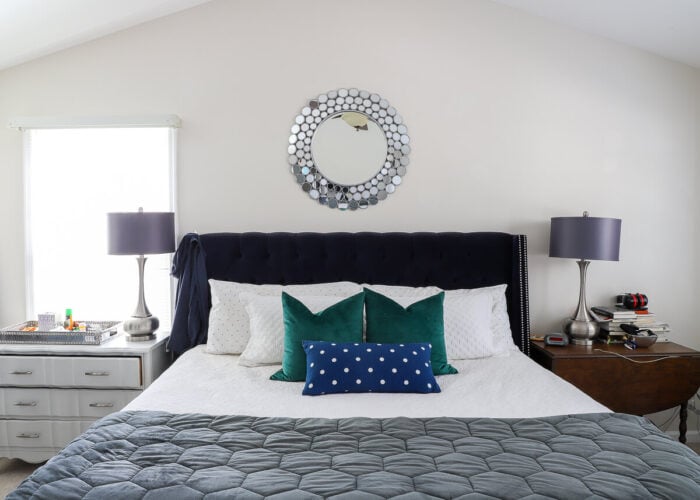





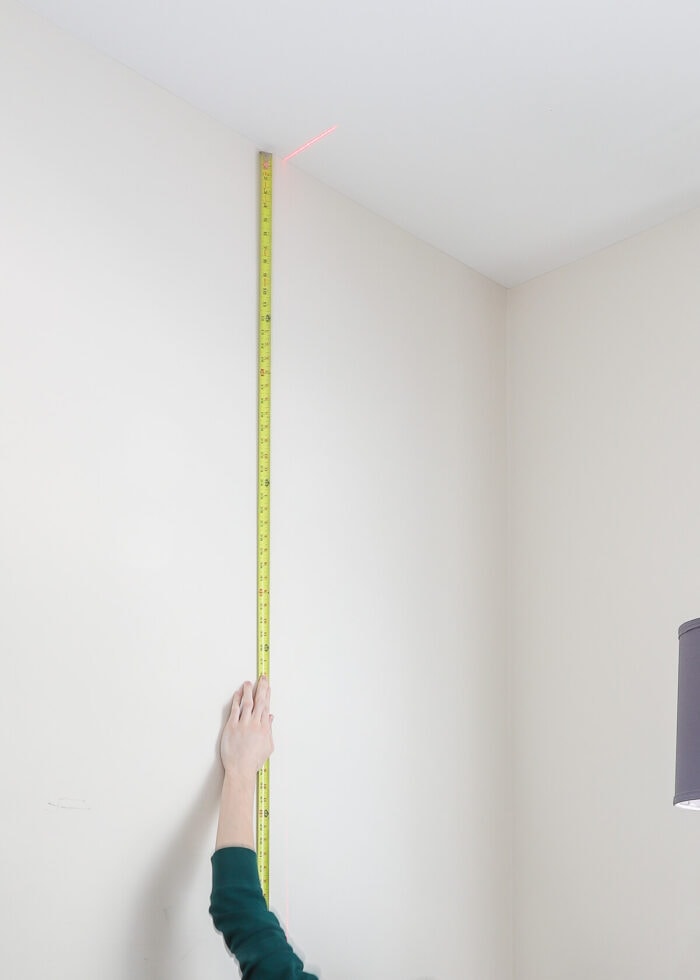







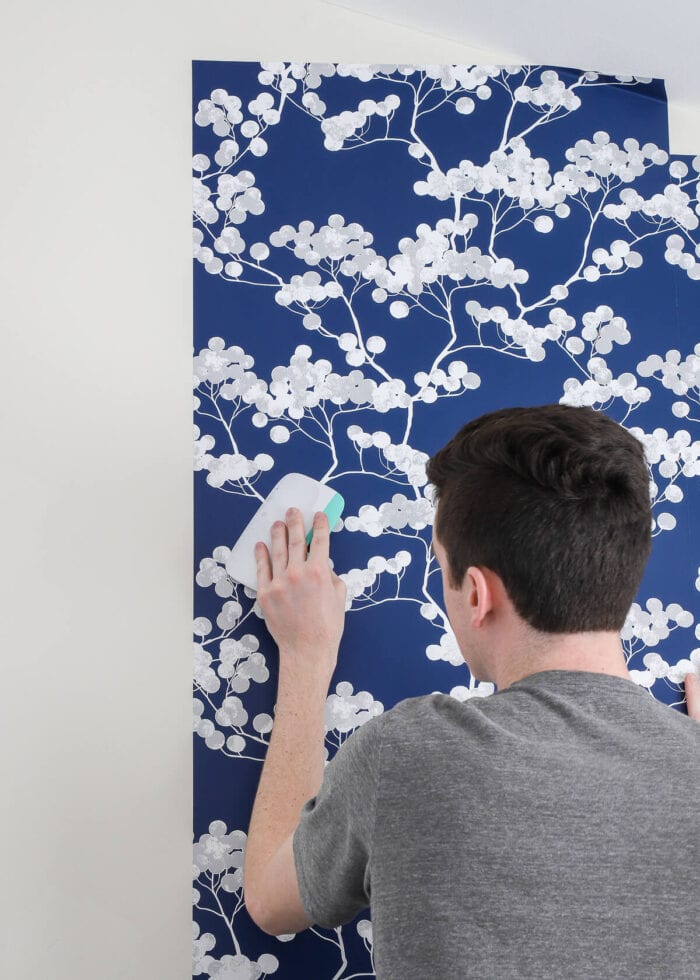









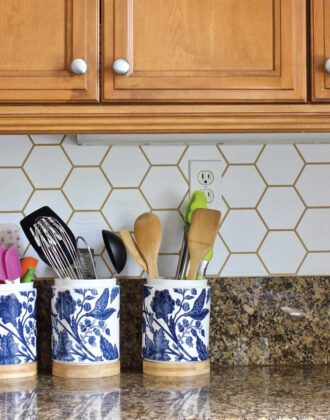


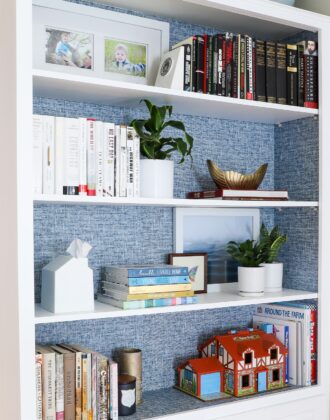

5 Comments on “How to Hang Peel and Stick Wallpaper”
Such a beautiful transformation Megan!
Thank you so much, Jennifer!
You are AMAZING when it comes to making your walls look AMAZING!
Aren’t you the blogger who always makes the walls behind your shelves,
ex: pantry, always look pretty with wall paper, wrapping paper etc…
When seeing your master closet in your bedroom, (was impressed for sure!),
my jaw dropped when I did not see any “pretty” behind the shelves. Tell me
you may put the beautiful pattern behind your bed on the middle wall in the
master closet…please, please….like a little kid acts in the store inserted here!
Just giving you a hard time today, smile, I am sure I will live without seeing
your master closet with the peel and stick wallpaper in it, and you will too,
right? Good luck on completing the projects you have left and how N-I-C-E
it will be to ‘only’ have to clean and enjoy your master bedroom. sigh!
Ha! I LOVE this comment!
Yes, you are correct – I am the blogger who almost ALWAYS adds pretty paper inside drawers and to the backs of closets. And yet, I am SO sorry to disappoint you – I have not added this pretty paper to the back of our master closet (although I do LOVE that idea!).
Here’s why…I almost always use “cheap” papers for closets and drawers. (Papers I either find on clearance or paid less than $10/roll for.) It may not seem like it, but a closet wall can easily take 2-3 rolls; and in a non-forever home, I just don’t want to splurge $60-90 on a closet wall…especially since we are due to move out next summer.
Now that I’ve made my case though, you’ve definitely got my brain somewhat obsessed with the idea. I never say never…but not sure that one will get done…at least in this house 😉
Thanks for leaving a comment that brightened my day!
Hello! Thanks for the tutorial. I am getting ready to take on my very first peel and stick wallpaper project. I’m going to be doing a wall, ceiling, and adjoining wall in a stairwell…very ambitious, I know.😅😬 Essentially, the side walls as you go down the stairs will be white, and the far wall, ceiling, and doorway wall will be papered. I think it’s going to be really cool…if I can pull it off. My question for you: do you think using peel and stick on the ceiling will be okay? Should I add paste to the edges to make it adhere better (thinking about gravity here)? Do you ever overlap a tiny bit to prevent seams from showing? The wallpaper I’m using is a dark botanical print, with black background.
Thanks so much!